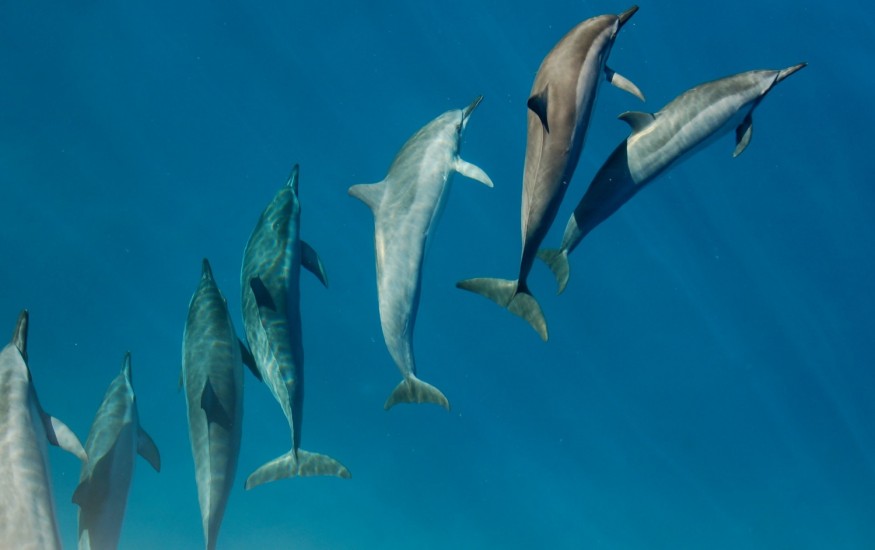Dolphins demonstrate social recognition by sampling sips of each other's urine, which begins with an exchange of whistles that are unique to specific individuals-much like names for humans.
Scientists have long known that dolphins use "signature whistles" that are unique to each dolphin, and that they address one another by imitating these whistles. However, researchers were unsure whether this copying demonstrated that dolphins associate signature whistles with individual identity or with a broader concept like "friend."
Scientists recently discovered that bottlenose dolphins not only recognize names but also replicate this recognition with another sense: taste.
The dolphins demonstrated that they could keep track of each other's identities using two types of sensory input: tasting each other's urine and recognizing the source. The animals could create and store mental concepts of other dolphins, according to the new research.
Palatable Peers

While investigating whether dolphins are truly calling each other by name when they copy whistles, researchers discovered that they do so via pee-tasting. The researchers conducted a cross-modal study, in which they tested whether an animal can recognize an object or another animal-based on multiple cues received through various senses.
Such experiments have previously been performed on a variety of animals, including fish and monkeys. However, most animals' communication systems lack sounds that can be recognized as individual labels, such as dolphins' signature whistles, according to the researchers.
However, finding a second sense in dolphins that were testable under laboratory conditions was challenging.
Jason Bruck, a biologist at Stephen F. Austin State University in Texas and the lead author of the study, explained that testing dolphin sight or echolocation would involve moving giant monitors or even the dolphins themselves around, which is impossible. Dolphins have been observed swimming through the urine plumes of other dolphins with their mouths open, possibly to gather social information.
Bruck likened this behavior to that of dogs sniffing hydrants. He added that rather than the sense of smell, dolphins would have to use taste.
Taste Testing
Dolphins spent roughly three times as much time sampling urine from unfamiliar dolphins as they did from familiar dolphins, according to researchers. This suggested that the animals could recognize one another based on their tastes, Live Science reports.
Researchers paired recordings of signature whistles with dolphin urine to see if identification could be maintained across senses. The whistler produced the urine in some of the pairings, while another dolphin produced it in others. The dolphins were then exposed to the sound of a whistle as well as the taste of a urine sample.
Listening dolphins moved closer to the playback speakers when the pee matched the whistle. This meant the animals recognized the consistency of signals perceived through two senses, taste and hearing, and that both taste and sound came from the same dolphin.
These findings imply that whistles in the minds of other dolphins represent the specific dolphin's identity, including the taste of that dolphin's pee.
Bruck explained that when a dolphin produces that signature whistle, they are referring to that dolphin they're copying. The dolphins are using those whistles in much the same way that people use names, the scientist added.
Related article : Rare River Dolphin Found Hanging Out With Anaconda
© 2025 NatureWorldNews.com All rights reserved. Do not reproduce without permission.





